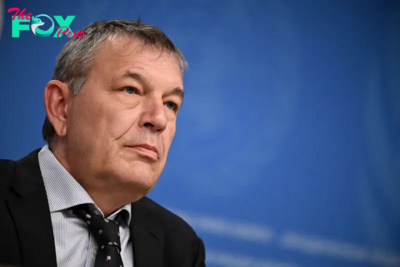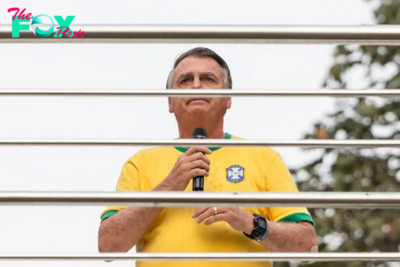World News
What Are Working Royals? And What Happens When They Can’t Work?
An unprecedented Health crisis is causing new chaos for Britain’s royal family. But as the number of working senior royals at “the firm” has dwindled in recent years, a personnel shortage has been looming large for a while.
King Charles III—less than two years into his tenure as monarch—announced that he had been diagnosed with an undisclosed form of cancer in February and would reduce his public duties to recover.
Typically, if a monarch is unwell, they have a network of royals known as senior or working royals, who they can rely on to carry out duties for them. The working royals are higher up in the line of ascension than non-working royals, or related to those who are.
“Working members of the royal family are expected to undertake full-time royal duties representing the monarch in public life. They are expected to be public figures who will receive press and public scrutiny as the expenses of the monarchy are covered by the sovereign grant,” royal historian Carolyn Harris tells TIME. “In contrast, non-working members of the royal family may be present for family occasions but they pursue their own careers and do not represent the monarch in their activities.”
As the heir apparent, Prince William is expected to pick up additional duties while the King receives treatment. But it is not just the King’s health that took the public by surprise. Kate Middleton, Princess of Wales was also hospitalized for planned abdominal treatment and—beyond two paparazzi photographs and a blundered Mother’s Day photo —the royal has not made a public appearance since December. For a period, Prince William took time away to help his wife recover, but he has since returned to a full roster of responsibilities.
The number of working royals has shrunk since Prince Harry and Meghan Markle, Duke and Duchess of Sussex stepped back from life as working royals in 2020, and Prince Andrew was stripped of his titles and patronages due to U.S. civil action over sexual assault allegations.
Experts say this shortage has left the family vulnerable.
Who are the working royals?
There are currently 11 working members of the royal family: King Charles III and Queen Camilla, the Prince and Princess of Wales, Princess Anne, the Duke and Duchess of Edinburgh, the Duke and Duchess of Gloucester, the Duke of Kent and Princess Alexandra.
Though given how few appearances and a lack of strong name recognition, many experts don't consider the Gloucesters or Princess Alexandra part of the core unit of senior working royals. With the King and Kate unavailable, that leaves just five people to take on the bulk of public engagements.
What do senior working royals do?
Working royals are people who support the King in his role as head of state, Clare McHugh, royal historian and author of The Romanov Brides tells TIME. “The monarchy is no longer just a rich family that does what they want," she says. "In the last century, gradually, the wealth and the family has been streamlined, in order to emphasize the fact that these are not a bunch of freeloaders."
At one time, the senior royals held hundreds of patronages each and collectively carried out thousands of engagements each year, says British commentator Richard Fitzwilliams. King Charles III completed 425 engagements in 2022, compared to 592 in 2012, according to annual reports in The Telegraph. Princess Anne, long considered "the hardest working royal" completed 457 royal engagements in 2022, according to The Telegraph, down from 566 in its 2012 report.
Working royals represent King Charles III in public engagements, which are all listed in the court circular, a public, official record of past engagements that dates back to 1997. Public engagements can range from anything from state dinners to overseas tours to presenting honors.
Why are there so few senior working royals now?
The dearth of working royals simply comes down to bad timing, says McHugh. “It’s very bad luck. For all of the Queen’s reign, she not only had a very steady and Healthy husband all the time, she also had older cousins who were able to help out,” she says. “Prince Charles has not been as lucky.”
King Charles III has long been a proponent of a “slimmed down” monarchy, cutting back the number of working royals to the monarch, the monarch's children and their families, as a way to lower expenses. But recent Health issues, coupled with the Harry and Meghan’s withdrawal, and Prince Andrew’s removal from his royal duties have put the idea to the test—and perhaps shown the benefit of the extended royal family.
“At the time this idea of a streamlined monarchy developed during the later decades of Queen Elizabeth II's reign, the future King Charles III did not anticipate Prince Harry stepping back from his duties as a senior member of the royal family or the abrupt end of Prince Andrew's public life following his legal problems and disastrous 2019 BBC newsnight interview,” says Harris.
Lesser-known working royals may be asked to pick up the slack, but they don’t have a strong public perception. “Prince Edward and his wife lack star power,” says McHugh.
Still, their roles are proving necessary. “The recent health problems experienced by King Charles III and the Princess of Wales have highlighted the importance of Queen Camilla and the extended royal family, especially the King's siblings Princess Anne and Prince Edward, in maintaining the monarchy's public profile in recent weeks,” Harris adds.
How will the crisis affect perceptions of the monarchy?
An April 2023 YouGov poll found that 58% of British adults believe that the monarchy is good for Britain, but In spite of recent Scandals, McHugh says that things would have to get much worse to have a sustained impact on the monarchy’s reputation.
“The current crisis is the result of a coNFLuence of events,” says McHugh. “They just have to get through this period. People have so much goodwill for them. They would really have to do a lot more messing up before there’s a true lack of confidence.”
Correction, March 14
The original version of this story misstated King Charles' regnal number. He is King Charles III, not II.
-

 World News7h ago
World News7h agoUNWRA Chief Philippe Lazzarini on the U.N. Agency’s Future in Gaza
-

 World News17h ago
World News17h agoBrazilian Police Indict Former President Bolsonaro for Alleged Attempted Coup
-

 World News1d ago
World News1d agoThe Future of Climate Action Is Trade Policy
-

 World News1d ago
World News1d agoWorld’s Best Brands – Brazil
-

 World News2d ago
World News2d agoWorld’s Best Brands – India
-

 World News2d ago
World News2d agoInternational Criminal Court Issues Arrest Warrants for Netanyahu and Hamas Commander
-

 World News2d ago
World News2d agoLandmark Bill to Ban Children From Social Media Introduced in Australia’s Parliament
-

 World News2d ago
World News2d agoAmerican and Australian Tourists Die in Laos After Drinking Tainted Alcohol

















